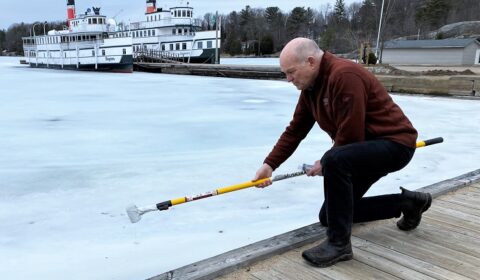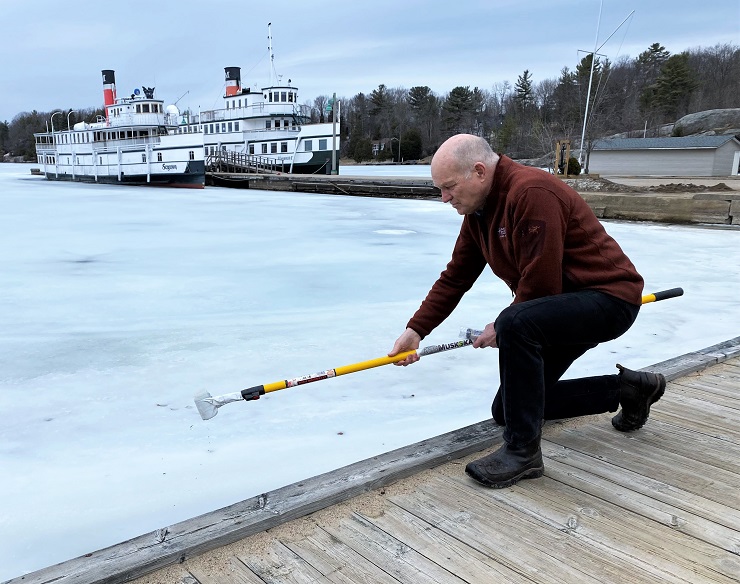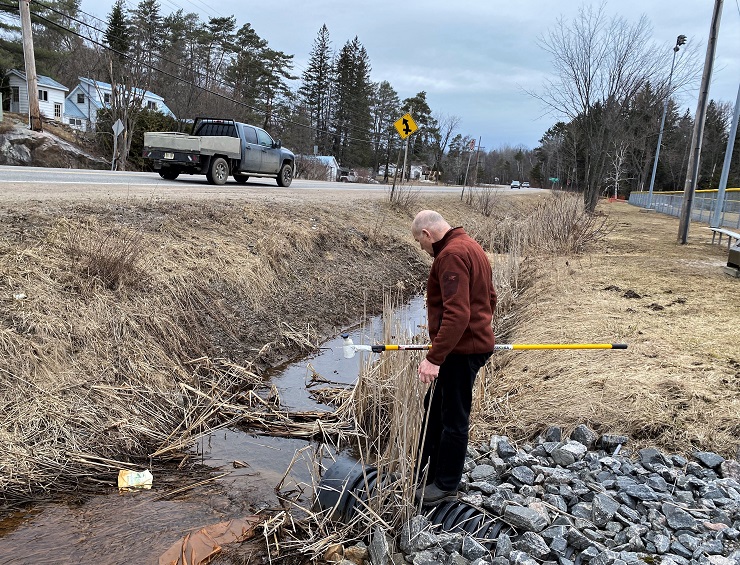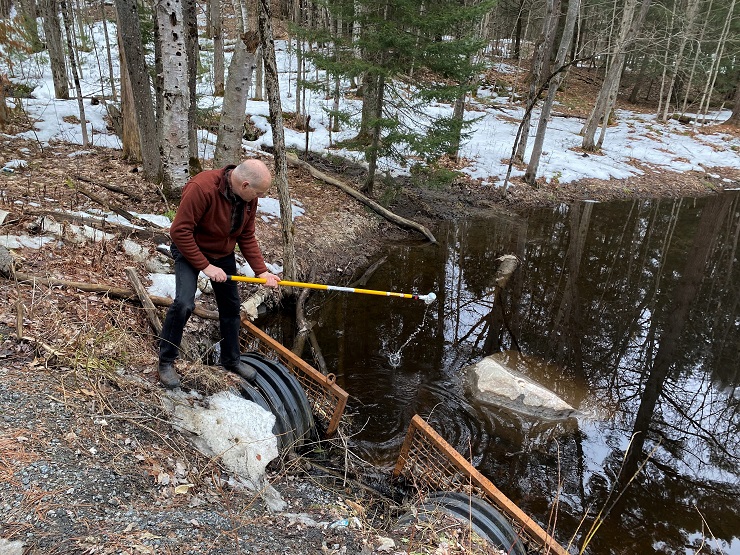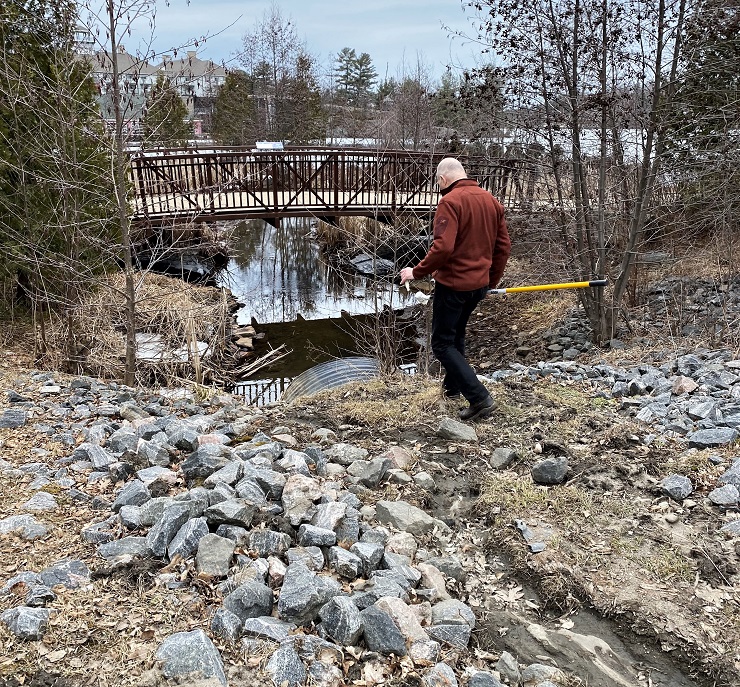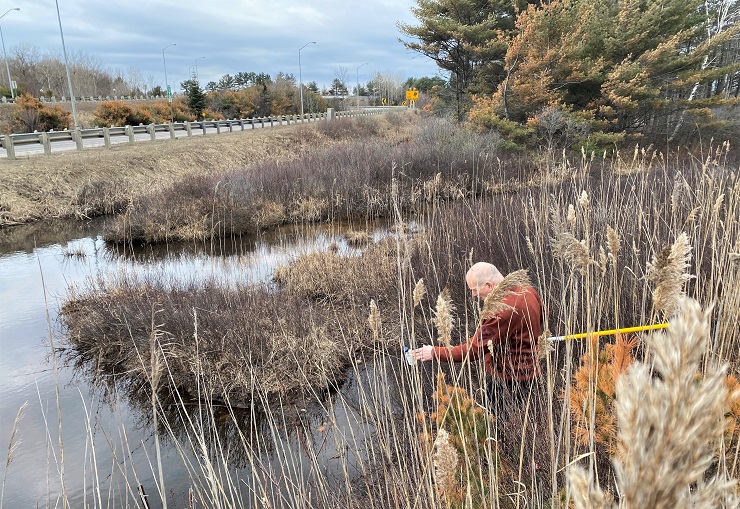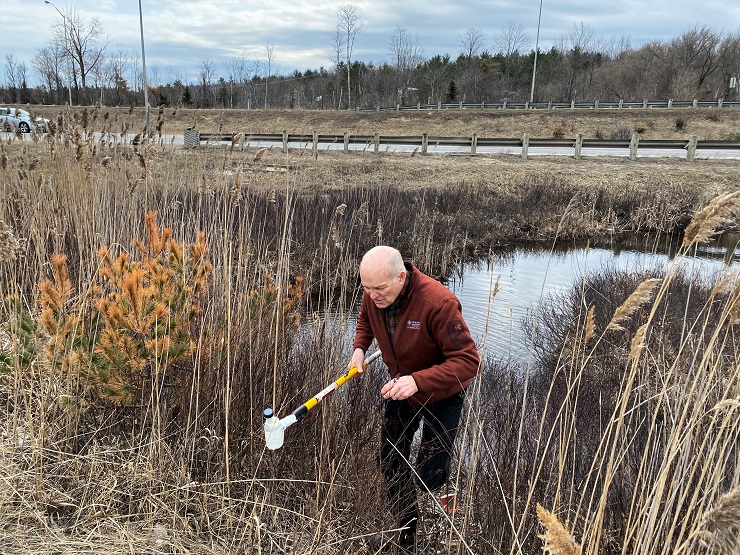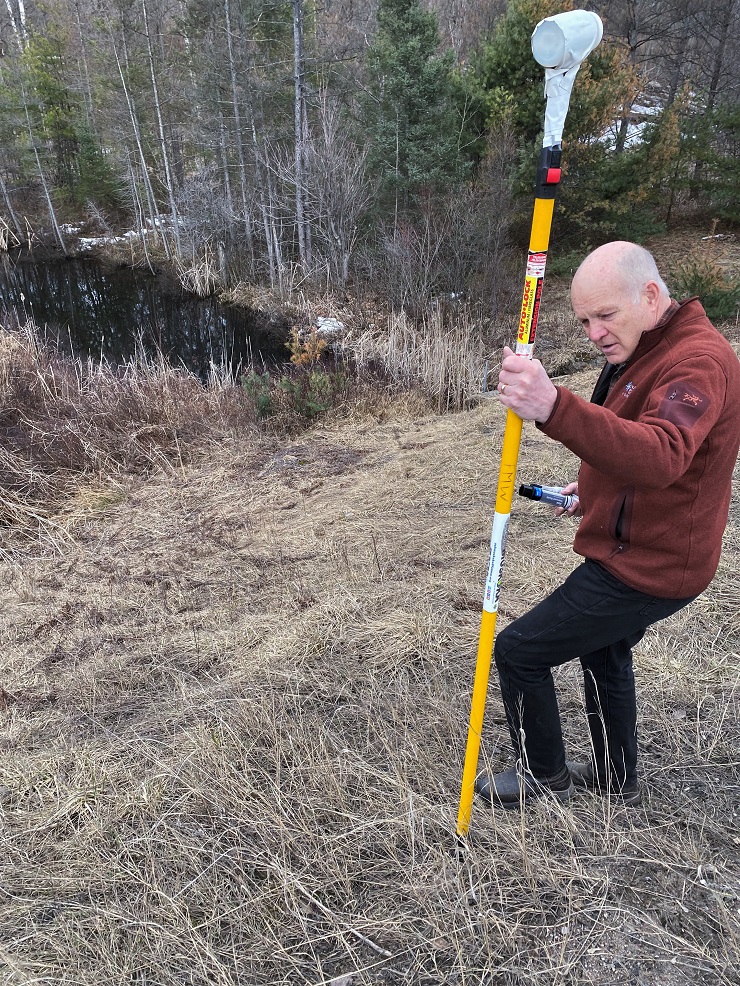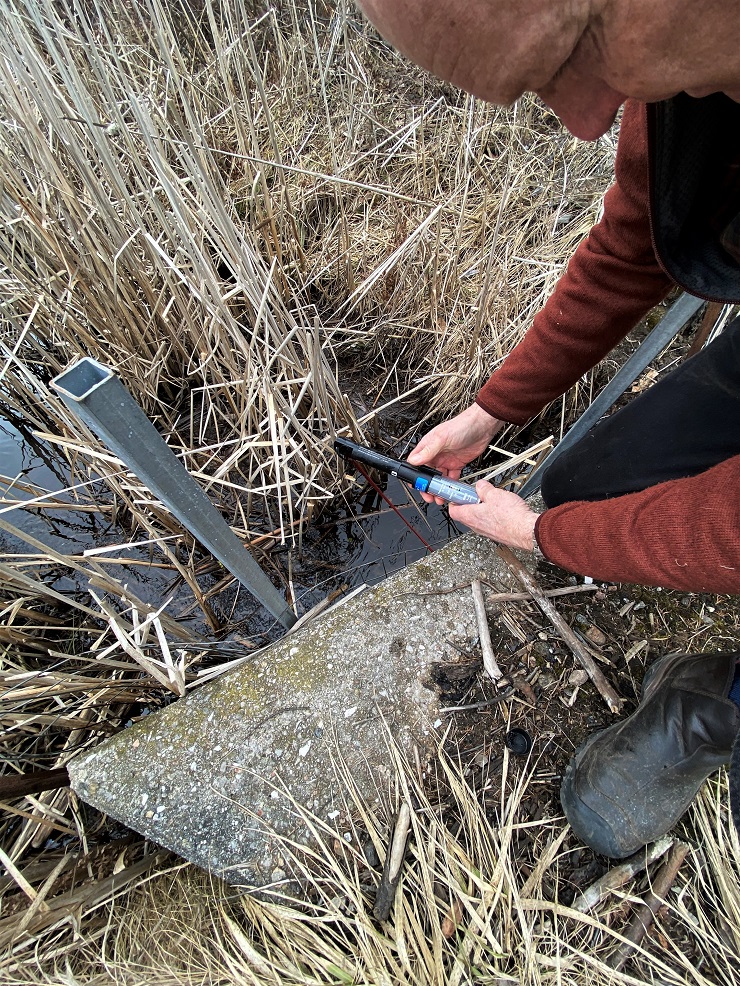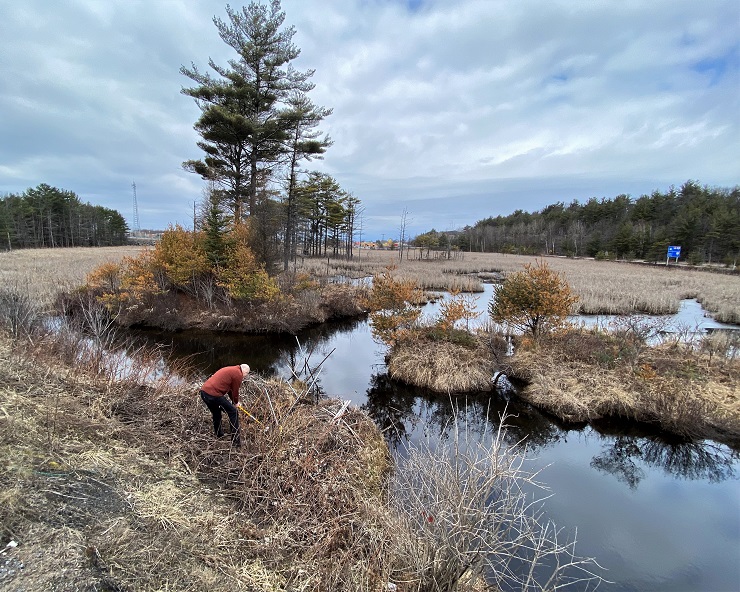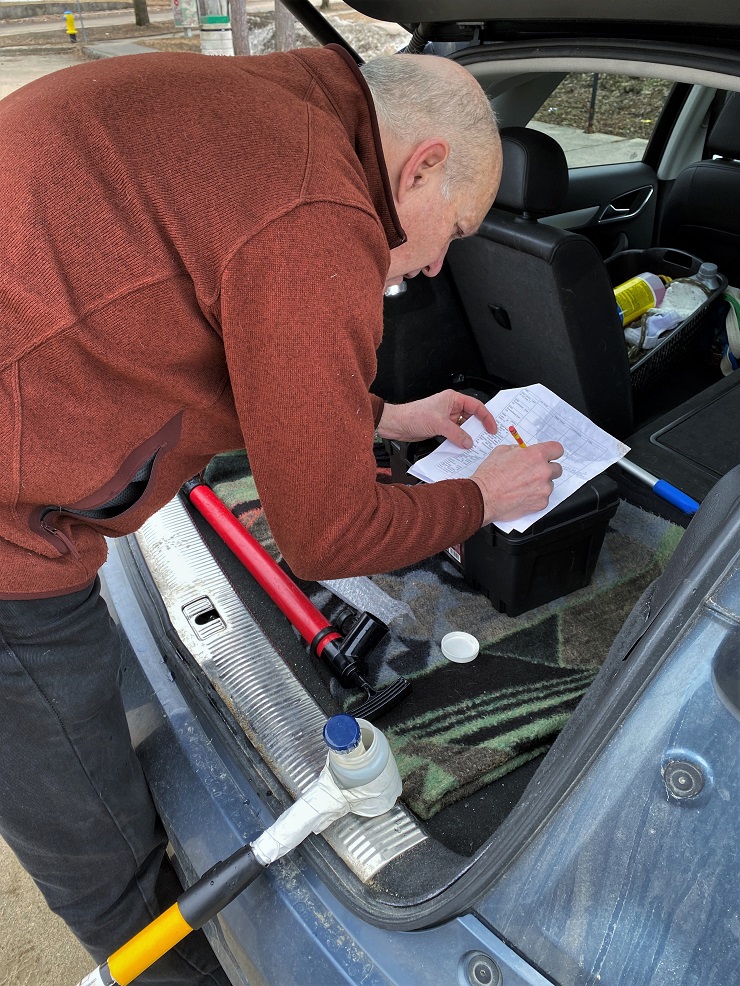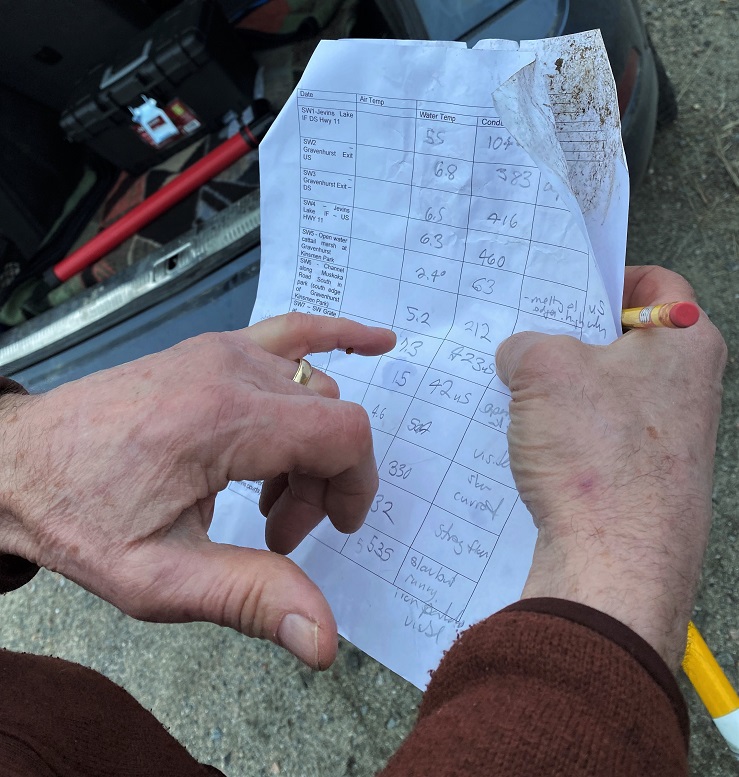ROAD SALT STUDIES CONFIRMING THAT TOO MUCH IS HURTING MUSKOKA’S WATER LIFE
Mark Clairmont | MuskokaTODAY.com
MUSKOKA — When Neil Hutchinson retired at Christmas from his environmental sciences business in Bracebridge, he joined the ranks of other local retirees who volunteer their time.
He plays flute in the Muskoka Concert Band and strums his guitar in local folk club settings — recently performing a gig at Bracebridge Hall.
But as spring and life returns to semi-normal, the volunteer and board member of the Friends of the Muskoka Watershed (FMW) still ponders the great questions: What about the district’s water and plant life?
And the health of Muskoka Lakes.
After travelling the country and working much of the time out west and in the far north with Hutchinson Environmental Sciences (which he sold to his staff), it’s those two lingering questions that keep him and other local scientists up at night and also gets them up in the morning.
It’s what’s had Hutchinson wandering around Gravenhurst every couple of weeks this winter and now dipping a long yellow pole — he handcrafted with a small plastic bottle on the end — and dipping it in ponds, wetlands, rivers, lakes and drainage ditches.
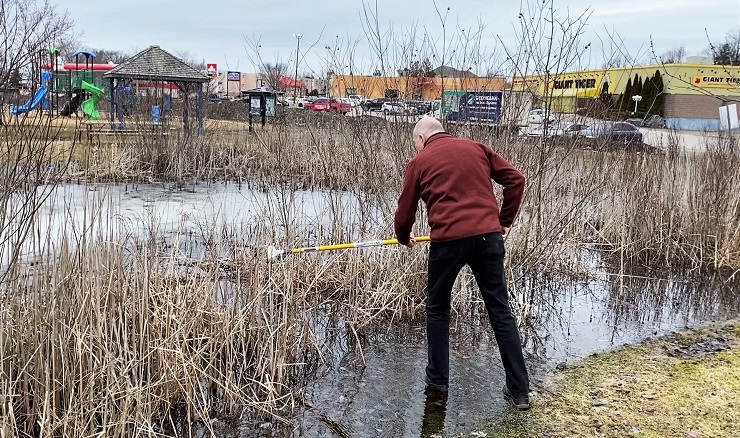
Using “grab samples,” he does on the spot tests “to see if there is any road salt runoff in them and any chloride.”
With the aid of a small $100 instrument he dips in the end of his fishing pole “we’re going to measure conductivity, which is a surrogate for the total amount of salts — or hardness of the water. So then we can relate that back to a graph that we measure the chloride.
“Road salt is hurting the water life that lives in the water,” he said, when we went with him for an hour’s long water tour around town. “There should be ways to manage it and still have (road) safety and not damage our waters.”
He said his small project is studying 11 land use sites from Jevins Lake on the east side of Hwy. 11 to Lake Muskoka on Hwy. 169 and drainage from Loon Lake as a “natural reference.”
It is funded by the province’s Muskoka river grants and all costs are covered by no other sources within the FMW.
He said “the most useful sites are upstream and downstream of a highway.
“And we’ll show you on 169 a various obvious example of how the highway changes the water quality.”
One of his test sites has a permanent fixture in place that takes sample readings several times a day, which Hutchinson then collects every couple weeks when he visits the highway location.
He said it follows up on a lot of science done at York and Queen’s universities, which “shows that chloride is quite damaging to fresh water plankton, to small shrimp, in water that is soft — like the Canadian Shield water.
“The Canadian Shield water makes them more susceptible to many contaminants including chloride. And the low amount of food, the low productivity of our waters, also tends to make fresh water life a bit more sensitive to chloride.
“So we’re worried about the health of the lakes and wondering if there are alternatives to putting road salt in place, that could be done to reduce road salt going into the water and still maintain public safety on our roads.”
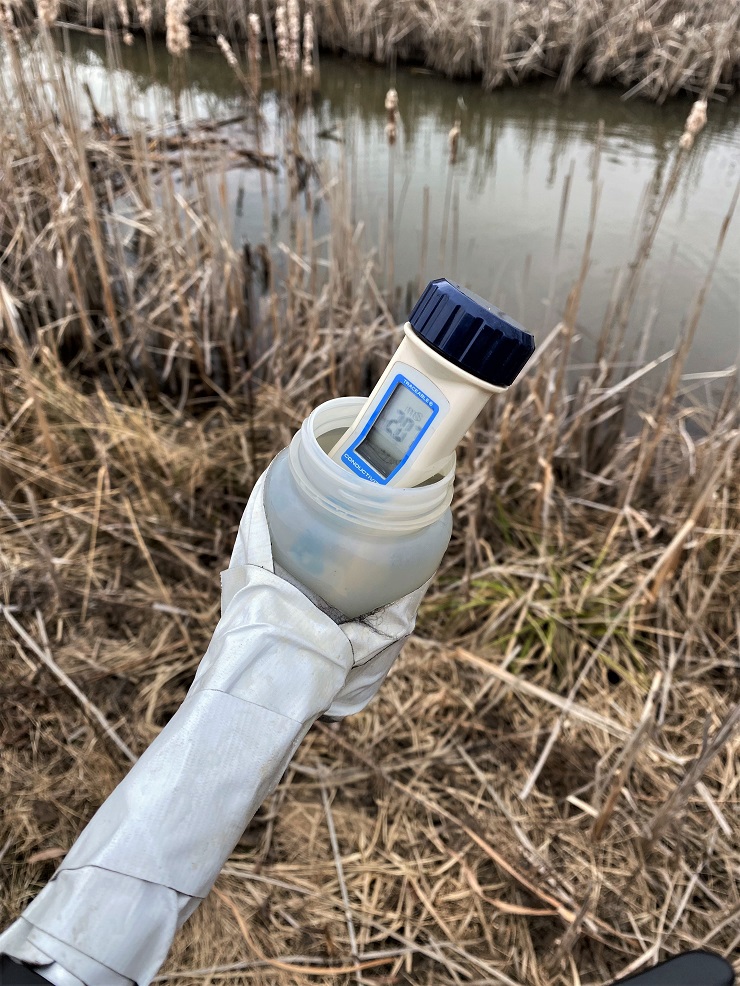
Hutchinson said there are fears about the need for extra salt to cut down on accidents — and slips and falls in parking lots.
“I know part of the fear is that people fear if they don’t sock it to their sidewalk, if somebody falls they’re going to get sued. I think we need to be put in to context — and that it doesn’t take so much.”
He thinks governments and private plowing contractors tend to “over ensure — add more than they need to get the same effect. A mixture of salt and sand is as equally effective as a mixture of salt to getting the job done. The salt, of course, melts/runs away, with the first thaw and the sand tends to stay there.”
Science shows, he said, that too much salt is hurting the water.
“It’s hurting the fresh water life that is in the water. Yes. Absolutely.
“That’s our biggest concern. Coupled with the fact that there should be ways to manage it, so that we can have safety and still not damage our waters.”
And while FMW are having some success and getting their message out, he said they are “only at the beginning. So they haven’t been able to judge” how effective their messaging is.
He said someone told him at the Muskoka Watershed Council recently that Mount Tremblant, the big resort area in Quebec, had banned road salt.
“And that’s a winter area like Muskoka. Probably a bit colder, they don’t need that much salt. But it would be interesting to know if their traffic accidents had changed as a result of that.”
Hutchinson’s study will complement a report written by Dr. Norman Yan, one of Muskoka’s foremost water and environmental scientists, entitled ‘10 Questions about road salt,’ which is available at the FMW website or their office.
“He took the lead on that and I’m helping him out.”
Retired environmental scientist Neil Hutchinson explains his bi-monthly road salt study of 11 Gravenhurst sites.
EMAIL: news@muskokatoday.com
28 years of ‘Local Online Journalism’
Twitter: @muskokatoday, Facebook: mclairmont1
Leave comments at end of story
SUBSCRIBE for $25 by e-transferring to news@muskokatoday.com
Or go online to https://muskokatoday.com/subscriptions
